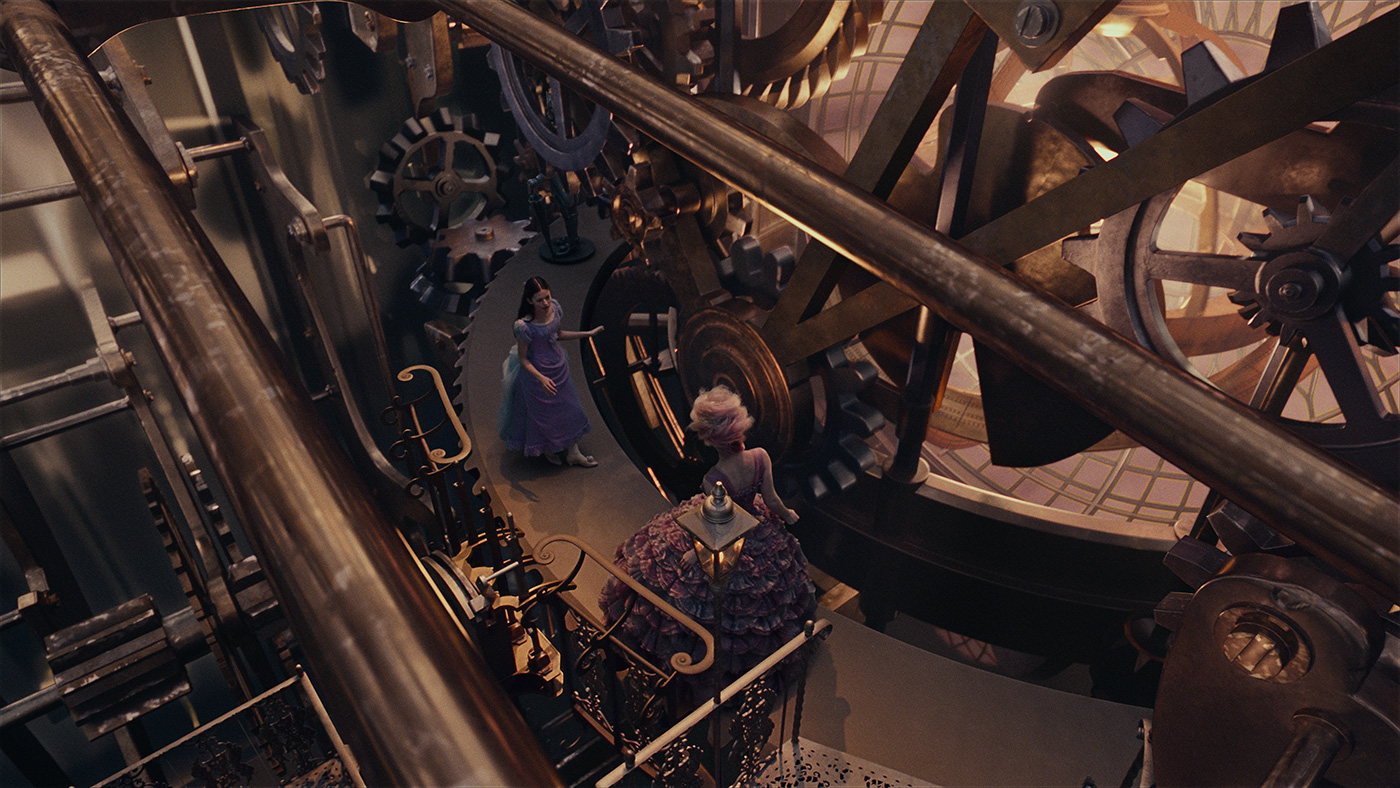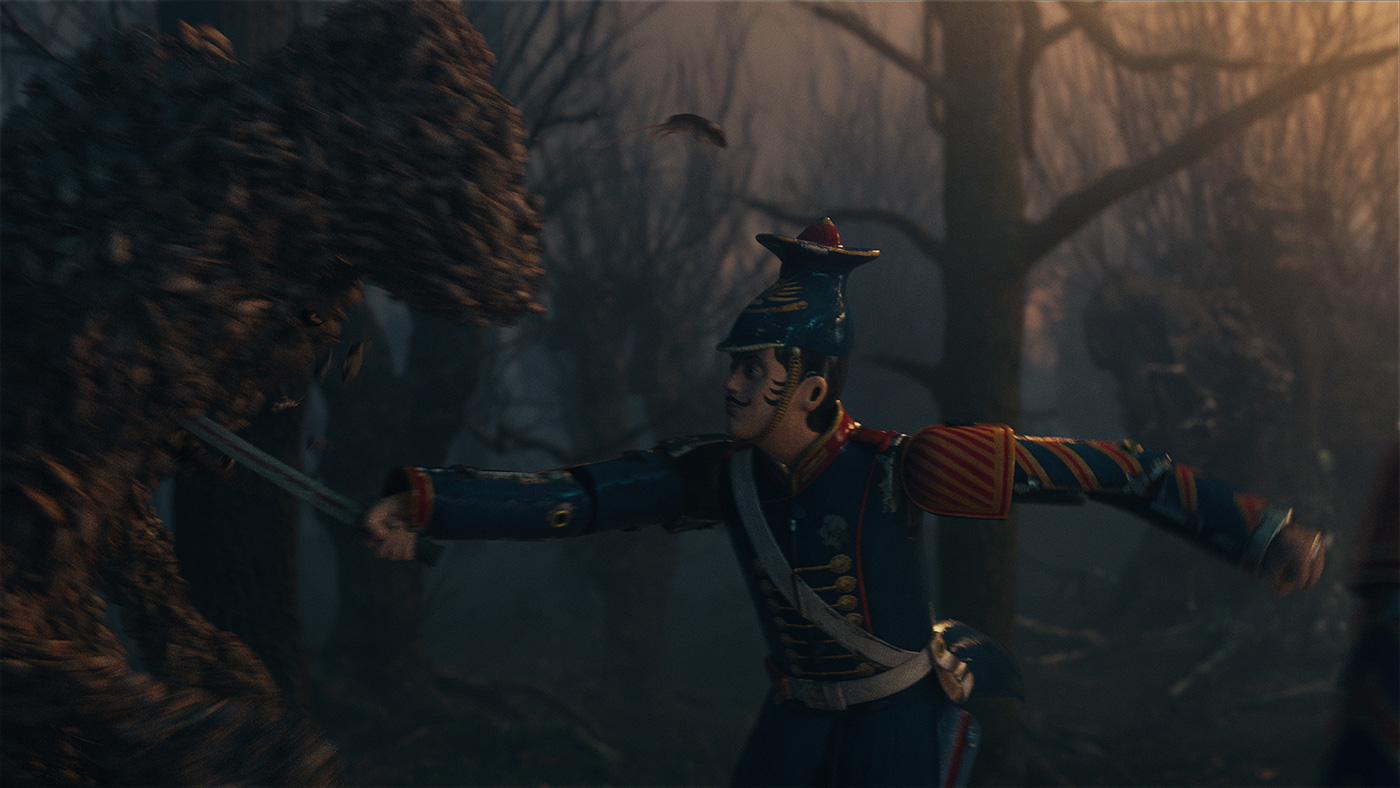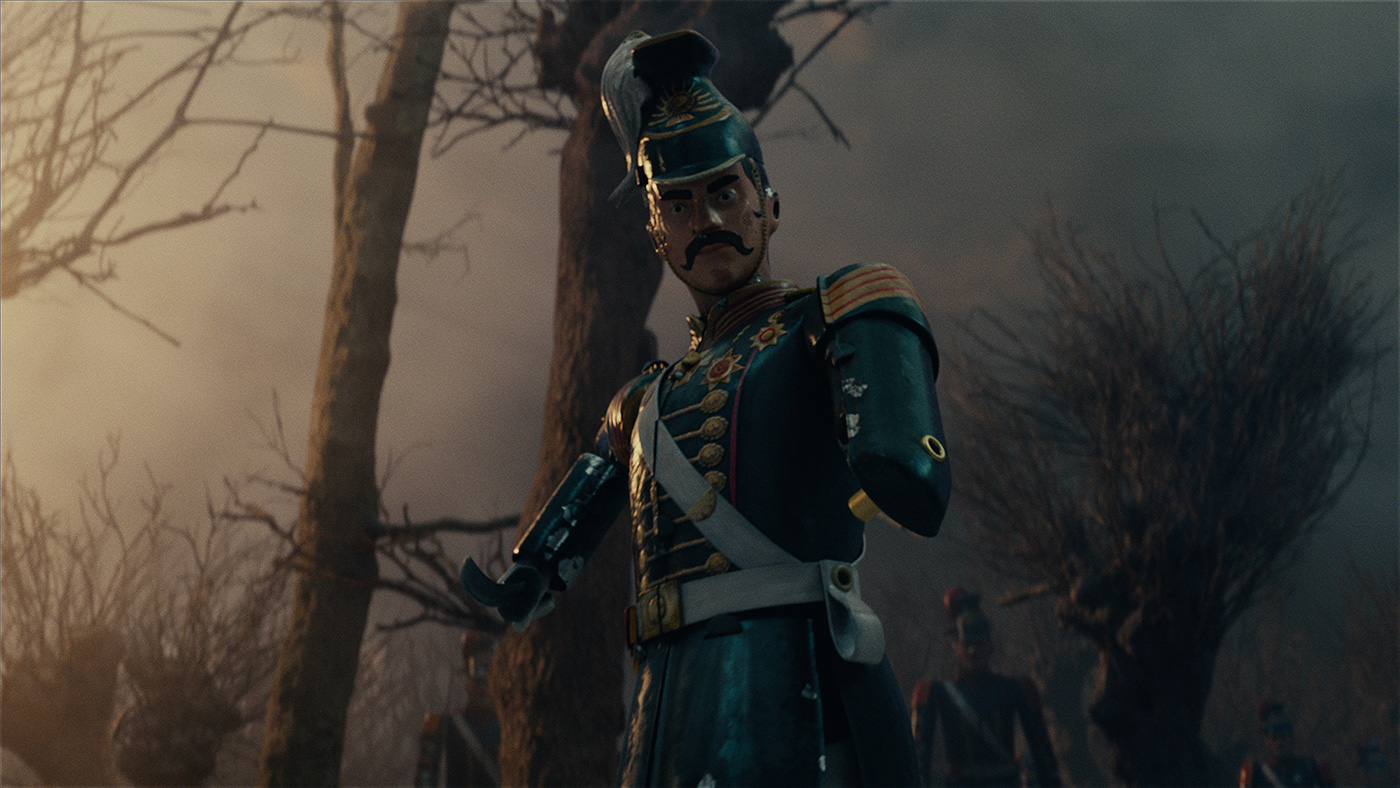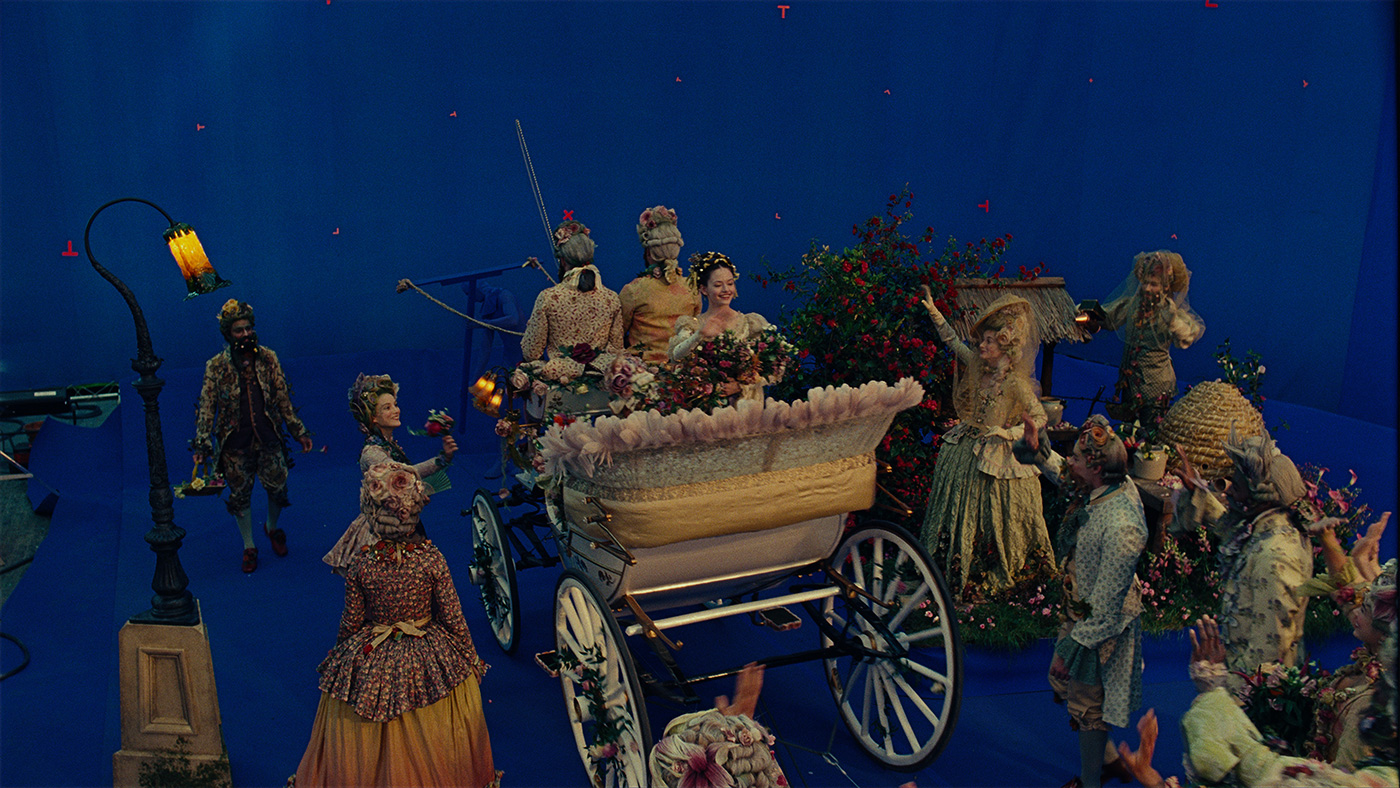Max Wood began his career in visual effects in 2003 at MPC. He works on films like WATCHMEN, ROBIN HOOD, WORLD WAR Z and 300: RISE OF AN EMPIRE. As a VFX supervisor, he took care of the effects of films such as SAN ANDREAS, ZOOLANDER 2 and SUICIDE SQUAD.
What is your background?
I went to Bournemouth University National Centre for Computer Animation and did my degree in Computer Animation and Visualisation. I then worked for a small animation company called Tandem Films in London before moving to MPC where I started as a matchmove artist. Next I progressed to modeling, a little texturing and rigging, grooming, lookdev and lighting and then became CG supervisor, followed by DFX supervisor and then VFX supervisor. I’ve been at MPC for over 15 years now.
How did you get involved on this show?
MPC put my name forward to Disney and after a couple of phone calls I was asked to be production side VFX Supervisor.
How was the collaboration with directors Lasse Hallström and Joe Johnston?
Working with both directors was great. They have very different backgrounds with VFX but were both very open to the methods needed for producing a VFX heavy movie.
What were their approaches and expectations about the visual effects?
Both were very keen on the mix of the fantasy world and photorealism. Not only for the fantastic worlds that we were building but also for the characters. Joe was especially keen on keeping everything based on reality and physics; we always made sure that we had real world references to refer to when talking about any of the VFX.
How did you work with VFX Supervisor Richard Clegg?
I specifically asked for Richard Clegg to be the internal VFX Supervisor at MPC, as I knew his work and thought this was the perfect show for him! He has a great eye for detail and knows where to place the importance and artist time in a shot.
How did you organize the work with your VFX Producer?
At the beginning of the show we knew that we wanted to split the show between two vendors. The obvious split was the Victorian London scenes and the fantasy scenes inside the Four Realms. We knew that Rodeo FX are great with environments and so we wanted them to do the big opening shot flying over Victorian London and down the frozen River Thames. MPC took on the work inside the Four Realms, due to their fantastic digital doubles, environments, creatures and FX. Towards the end of the show, we needed to expand to more vendors to help with the additional footage shots and to enhance the ballet sequence. Due to the motion graphics needed for enhancing the ballet, we got several motion graphics specialists to do some tests. Joe Johnston was particularly impressed with One of Us and they did an amazing job on the sequence. For the additional footage we impressed by Luma Pictures’s reel and after talking with them, we gave them a range of shots including the VFX heavy shots inside realms of snow and sweets.
How did you split the work amongst the MPC offices?
MPC has a department-based structure and so it wasn’t a case of some scenes to go to one office and other scenes to go to another. All of the prep and matchmove is done in Bangalore, the assets are created in both London and Bangalore. The majority of shot work was done in Montreal and compositing was split between London and Bangalore.
What are the sequences made by MPC?
MPC worked on around 1000 of the 1150 shots in the movie.
The biggest of which are:
- Clara enters the Christmas tree forest and meets Mouserinks.
- Clara being chased by the Mouse king.
- All exterior shots of the palace, waterfalls and wide shots of the realms.
- The scenes inside the engine room.
- Clara and Sugarplum inside the Clockroom.
- All shots of Mouserinks, the Polichinelles, Motherginger’s Marionette and the Tin soldiers
Many, many more sequences…
The movie opens with a long shot flying over London. How did you approach a shot like that?
This particular shot was achieved by Rodeo. It started off a single line in the script flying over the Royal Albert Hall and down to the frozen Thames. As we started the previs, it was obvious that the path didn’t show enough of London and its landmarks. The Royal Albert Hall is also a long way from the Thames and so we had a lot of time flying over rooftops. We realised it wasn’t working and switched our shot to starting over the frozen Thames, down Westminster bridge and over Big Ben. It started with just a sketch of the cameras path over a map of London. Next we did a basic camera move in Maya with simple geometry; it already worked much better than our attempts at the Royal Albert Hall. We used Google maps to look at which areas we would see on our route. We quickly realised that we were very lucky that nearly all of the buildings from 1890 are still standing, very little had changed. It was very important at this stage that we locked the path of the camera down, so that nothing could change so we made sure that we had approval from the filmmakers. As we only had one shot in this location it was easy to determine the level of detail required for each building and prop. We then sent out a photography group who took reference photos from the streets and a boat, again taking the most images where we needed the most detail. We were now in a great position to work up the build, followed by the crowd and then the final look.
How did you populate and the animate the crowds in the street?
Almost all of the crowd work was motion capture, including the ice skaters and guys driving the carriages. The ice skaters were especially fun to capture as we had adult and children on roller-skates.
Clara discovers a beautiful castle. What references and indications did you receive for it?
We received a huge package of artwork for the whole movie from the production side art department. I also had many meetings with Guy Hendrix Dyas, the production designer. Both the artwork and conversation were hugely beneficial. I quickly got a great sense of the fantasy world that Guy was imagining. Even during post-production I would often talk to Guy to make sure that we were still on the right path, I would show him renders of the palace and luckily he always seemed very happy with what we were doing!
Can you explain in detail about its creation and the huge environment?
One of the biggest challenges was producing the entire Kingdom consisting of four realms with their own unique towns and vegetation, the palace, huge waterfalls, rivers and background mountains. We see all of these elements in single shots and so we needed to be able to render it all together. Building everything to be as optimised as possible was critical to make rendering possible. We took advantage of PRMAN’s great bump mapping, displacement and instancing to achieve this. We split the world into small modules. We also did a little bit of custom development on top of our in house Asset Management tools to handle the large dataset and allow artists to work efficiently in parallel and share back and forth easily.
The castle is surrounded by water. How did you handle this FX simulation?
We used three different approaches for the water. For the rivers in the wide shots they were split in 12 different sectors (each one a simple geoPlane). On each sector we used a Houdini setup to create a grid of vectors that would define the speed and direction of the water flow. Those vectors were then used to drive some displacement. The variation of length (speed) between one vector and the surrounding vectors would help us to find when the water speed abruptly stop to generate white water with Houdini particles. On some shots even further away white water was just a texture. In the close ups, the water simulations were entirely created using Houdini flip solver, with the addition of particle and volumes for the splashes and the white water. The wide waterfall shots were achieved using Houdini particles emitted directly from our procedural river. We also added Bifrost volumes at the base of the waterfalls
The mouse turns into a really big form of thousands of mice. How did you design and create this massive shape?
The Mouse King is the name given to the monster that forms out of piles of mice. He is constructed from approximately sixty thousand mice. It was important to the Directors that his form and shape could change over time. It shouldn’t look like a fixed form with mice on top (a man in a suit). For this reason we needed to make a very flexible rig that the animators had lots of control over scaling and proportions for all the limbs, as well as tweaker controls that allowed them to alter the mass and structure of the Mouse King. The animated base form was a polygon model, which we then ran cloth simulations on to help give the base a fluid feeling with a sense of mass and weight. After this, we ran curves over the surface of the mesh that acted as guide paths for the mice. Using these guide paths, we simulated crowds of mice crawling, adding variation to their paths to avoid each other. We also had a few mice that would fall off as a rag doll simulation. Once they hit the ground they would immediately jump back up and run towards the Mouse King to join back in.
Sugar Plum creates a full army of tin soldiers. Could you explain in detail about their creation?
We had art department concept work that gave us the base design and colour scheme for the soldiers. We then collected references of vintage tin soldiers with simple joints that influenced the final result. They needed to have some basic rivet-joints to avoid squashing and stretching when they moved, something that tin obviously wouldn’t do. We put a lot of consideration into the joints and design to keep them simple, but also allowed enough flexibility in their performance.
Can you tell us more about their shaders and textures?
To add a little bit of variation to the soldiers, we introduced chips to their paintwork where they had been damaged when they were toys. The shaders handled this procedurally at render time. We modulated between a mix of painted chips with procedural noise to give all the soldiers in any shot their own unique chipped paint pattern.
How was simulate their presence on set for the interactions during the final sequence?
For any shots where we needed the Tin Soldiers to interact with our actors we took an approach where we rehearsed the action with stunt performers (in blue suits) acting as the Tin Soldiers, they would then push or grab the actors as the script described. The blue suited guys also wore a device on their head with a marker simulating the correct eye height of the 7 foot tall Tin Soldiers, allowing the actors to have a correct eyeline.
Once we were happy with the action, we would do a take including the blue suited stunt performers. We would also do a take with the actor performing with no stunt performer, but remembering the choreographed moves. We would always shoot a clean plate with no stunt performers or actors so that we can paint out (remove) the blue guys. This gave us the flexibility for the editorial team to see which take was move convincing.
Mother Ginger has a massive structure representing her. Can you explain in detail about its creation?
Mother Ginger’s Marionette started as concept art from the production art department. A 40 feet high and 30 feet wide practical model with a rotating skirt was built for using on stage; it was used in a few shots with the idea of visual effects augmenting arms, pistons and a moving mouth. During postproduction, her design was changed so that she doesn’t have pistons but cogs and she has a steam punk feel, with steam leaking from her joints and chimneystacks in her hair. In the VFX shots, her skirt was simulated in Houdini and this gave us great detail and flexibility for the interaction with the ground and the Tin Soldiers.
How did you manage the challenge of the shots where the tin soldiers attack the Mother Ginger structure?
This sequence was one of the most complicated and one of my favourites, especially in 3D! An army of Tin Soldiers attack Mother Ginger’s huge marionette. The sequence came up relatively late in postproduction. It’s a complicated fully CG sequence that Joe Johnston did great story boards for, we then moved it into previs very quickly and over to MPC to complete. MPC had to come up with a method to handle close up shots of tin-soldiers climbing over the giant marionette and each other without intersections. There were also a lot of rag-doll dynamics when the marionette hit the Tin Soldiers. They created advanced blending tools to blend from between animated clips and dynamic simulations. They also used this to be able to blend walks into climbs that adapted to the moving surface. This way, they could not only get the clips to adapt more accurately to the environment but also infuse variation into the clips themselves. One of the most complicated moments is as the Tin Soldiers climb the huge rotating circus tent skirt. First, the skirt is simulated, ignoring any Tin Soldiers, and then the soldiers are crowd simulated to climb the skirt, totally ignoring any penetration between the soldier and skirt. Finally a cloth refinement pass is added to the skirt to remove the penetrations. The skirt is now driving the soldiers motion but the soldiers also interact with the skirt. A slightly complicated workflow but it gave great results.
Can you tell us how you choose the various VFX vendors?
Each vendor has it’s own particular skillset. MPC produces amazing landscapes, creatures, digital doubles and FX work, and they’re a powerhouse who can turn out a lot of shots. We knew that Rodeo do great environments and so wanted them to do the opening to the movie. Luma are great all rounders and we knew that we could give them lots of different types of work. We went with One of Us for their skills with motion graphics.
Can you tell us how many vendors contributed to the project and what their work consisted of?
MPC handled around 85% of the visual effects, they did most environments and all of the character work. Rodeo did the 1 minute long opening shot of the movie, flying over a fully CG London, they also did some Victorian London plate augmentation and some other green screen compositing shots. Luma handled the shots inside the Land of Sweets and the Land of Snow plus set augmentation and green screen compositing. One of Us took care of the motion graphics seen in the Ballet sequence and the end titles.
Can you tell us more about your collaboration with their VFX supervisors?
I had a great experience with the entire vendor VFX Supes. Being Based in New York meant that we sat between all of the time zones and so we could space out our calls to suit the vendors time zones. I have known Richard Clegg for a long time and so there was already good bond, he knew what I liked and I knew that he could deliver it. Martin Lipmann, Rodeo’s VFX supe, came out to New York to meet with me and we visited his office several times during post production, we got on very well and even outside of our regular reviews we would email or speak on the phone to discuss different aspects of the shots.
The vendors are all around the world. How did you proceed to follow their work?
Dailies were submitted overnight by each vendor, I would review them in the morning and send written feedback, anything where I felt that needed further discussion or where the vendor had questions we would put into either a cinesync or tvips session that evening. We always tried to send feedback with 24 hours of receiving a daily.
Is there something specific that gives you some really short nights?
During post I was surprisingly relaxed as I had total confidence in the teams I was working with. The short nights were during production, when we were shooting. I wanted to make sure that we really were getting the best plates and best possible data for post production.
What is your best memory on this show?
Other than finalising the last shot and the incredible work that we achieved as a team, I would say that I really enjoyed the comradery on set, working with stands-bys, grips, the lighting and costume department and more – it really felt like a team effort where everyone wanted the absolute best for the movie.
How long have you worked on this show?
I worked on it for 2 years and 3 months.
What’s the VFX shots count?
1150, 1000 of which were done at MPC, the remainder split between Rodeo, Luma and One of Us.
What was the size of your team?
In total, between all of the VFX facilities, we had over 500 artists and members of production.
What is your next project?
It hasn’t been announced yet 🙂
What are the four movies that gave you the passion for cinema?
As a teenager I found my love of cinema and often snuck into the cinema to see films that were technically a little too old for me. The movies are all from a very similar time and are still some of my favourites… JURASSIC PARK, TERMINATOR 2, THE SHAWSHANK REDEMPTION and HEAT.
A big thanks for your time.
THE NUTCRACKER AND THE FOUR REALMS – VFX BREAKDOWN – MPC
WANT TO KNOW MORE?
MPC: Dedicated page about THE NUTCRACKER AND THE FOUR REALMS on MPC website.
© Vincent Frei – The Art of VFX – 2018
























